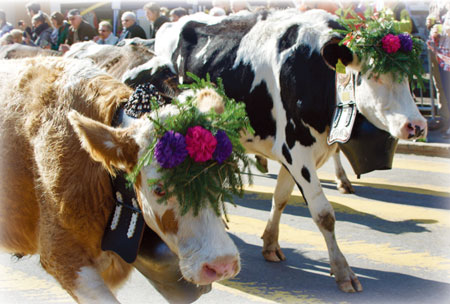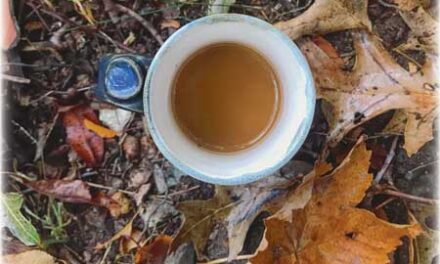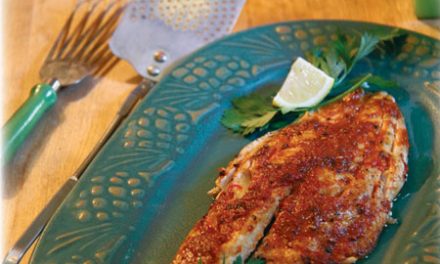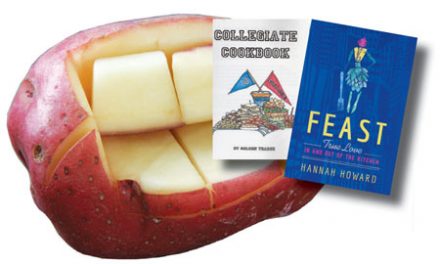by Adam Centamore
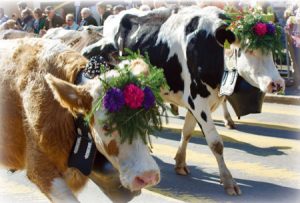
Photo Credit: Courtesy of Adam Centamore
On a crisp autumn Saturday in Charmey, Switzerland, hundreds of cows prepare to descend from alpine pastures to the villages in the valley below. Accompanied by the dairy farmers and families that care for them, they will walk for up to 12 hours to complete their journey home. As they pass through the center of the town, they will be cheered and admired by the thousands of people gathered to celebrate the ancient tradition of transhumance. A raucous festival is going on, and the cows are the stars.
Transhumance is a type of pastoralism which employs the strategy of moving livestock between mountain pastures in the warmer months and lower-altitude fields when colder. The name derives from the Latin words trans (across) and humus (ground). It’s a practice over 11,000 years old and is utilized on every inhabitable continent on the planet. Today, there are nearly two million transhumant animals globally.
Meanwhile, in a small cabin 5,000 feet above sea level, Alp Vounetz dairy farmer Béat Piller brushes down one of his cows. She’s a gorgeous black-and-white Montbéliarde named Trylol, and she’s ten years old. This will be her final descent from the alpine pastures. Next year she will remain in the valley, too old to make the long journey.
Piller has been making Gruyère d’Alpage AOP (AOP means Appellation d’Origine Protégée or Protected Designation of Origin) every day for nearly 20 years. He learned the trade from his uncle, and now makes 300-400 wheels a year with an assistant. His parents help take care of the herd and the small cabin where they stay during the alpine months (April to September in this region). From early spring to late fall, they will make two wheels of alpine cheese each day, the most they are allowed by Swiss law.
The decision to end a season comes when the grasses are too low to sustain the animals, not when it gets too cold. When the grasses are grazed to a certain level, it’s time to go. Staying any longer would jeopardize the ability of the grass to regrow before next season, a potential long-term catastrophe.
The strategy of seasonally moving the animals takes advantage of remote pastures whenever possible, usually because the lowland farms aren’t able to sustain large herds year-round. Transhumance is extremely important to pastoral societies because the animals produce dairy products that are a critical part of the diet of the people. Butter, cheese, cream, and yogurt form the majority of the calories consumed. Finding a way to maximize milk production and animal well-being is paramount.
When the time comes to escort the herd down, Piller’s entire family will help. More than 30 relatives will participate in the preparation and journey. From cleaning and repairing the cabin to dressing the cows for the walk, every helping hand is welcomed. Elaborate headdresses of flowers are strapped to the heads of the herd leaders. Brass cowbells are polished and decorated, the oldest and largest animals getting gigantic versions with thick, embroidered straps depicting family crests and other important imagery.
Even those walking will wear traditional costumes, enjoying the pageantry of the day. Once the descent is completed, everyone gathers for a celebratory meal called Le Benichon, marking the end of the alpine milking season.
In those societies practicing transhumance herders typically have a permanent home in the valleys where the weather is more temperate during the winter. In early spring, the herd will be escorted to the elevated pastures for the season. Only those needed to care for the herd and produce cheese will remain in the mountains. Any more people would require more resources, an unnecessary burden.
In the United States, most transhumance takes place on publicly- owned land and is therefore bound by the policies of the US Forest Service. Two notable exceptions to this are California and Texas. Both states have significant history and ties with livestock, so much of the usable land is privately owned and grandfathered in from current policies because of that historical development.
If the dairy farmers make traditionally significant products, as is the case with Piller’s Gruyère d’Alpage, strict guidelines must be followed. In Switzerland, that means walking the entire way–a trip that can take up to 12 hours to reach the remote fields.
Once the cows are ready to go, Piller looks around. He’ll be escorting his herd down shortly, leaving everything behind until the spring. For him, the act of transhumance goes beyond necessity or practicality. It signifies the turning of another year with his beloved animals.
Piller won’t return to the châlet before then, for any reason. “I can’t,” he says with a touch of melancholy in his voice. “The châlet is too cold without the cows.”
Adam Centamore is a food & drink educator and writer living on the South Shore. When he’s not teaching or writing he can usually be found usually be found roaming alpine pastures looking for his next Gruyère fix.

